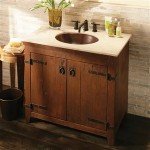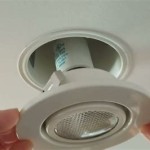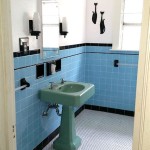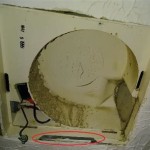Bathroom Faucet Water Supply Line Size: A Guide to Choosing the Right Size
When it comes to plumbing, seemingly small details can have a big impact on the functionality and efficiency of your systems. One such detail is the size of the water supply lines for your bathroom faucet. Choosing the right size line ensures adequate water flow, pressure, and overall performance. This article will explore the factors that influence water supply line size, provide guidance on selecting the appropriate size, and highlight the potential consequences of using the wrong size.
Factors Influencing Water Supply Line Size
Several key factors determine the appropriate size for your bathroom faucet water supply lines. Understanding these factors will help you make informed decisions when purchasing or installing new lines.
1. Faucet Type and Flow Rate
Different types of bathroom faucets have varying flow rates. For example, a standard single-handle bathroom faucet typically has a flow rate of 1.2 gallons per minute (GPM), while a high-flow faucet designed for showers may have a flow rate exceeding 2.5 GPM. The desired flow rate is directly linked to the required water supply line size. Higher flow rates necessitate larger diameter lines to accommodate the increased water volume.
2. Water Pressure
Water pressure also plays a crucial role in determining the appropriate water supply line size. Higher water pressure requires larger diameter lines to prevent excessive pressure drops and maintain consistent flow. Low water pressure, however, may necessitate smaller lines to prevent excessive flow and potential damage to the faucet.
3. Distance from the Water Supply
The distance between the water supply and the faucet can impact the necessary water supply line size. Longer distances increase the potential for friction loss within the lines, which can reduce water pressure. To compensate for this, it may be necessary to use larger diameter lines, especially for high-flow faucets or situations with low water pressure.
Choosing the Right Water Supply Line Size
Selecting the right water supply line size is essential for optimal bathroom faucet performance. Here's a general guide based on common bathroom faucet types and flow rates:
1. Standard Single-Handle Faucet
For standard single-handle bathroom faucets with a flow rate of 1.2 GPM, a ½-inch (12.7 mm) water supply line is typically sufficient. This size provides adequate water flow and pressure for most standard installations.
2. High-Flow Faucet
High-flow faucets, designed for showers or other applications requiring substantial water flow, often require ¾-inch (19.1 mm) water supply lines to ensure adequate water delivery. Larger diameter lines minimize pressure drops and maintain consistent water flow even with high demand.
3. Multiple Faucet Installations
If multiple faucets are connected to a single water supply line, it may be necessary to increase the line size to accommodate the combined water demand. A ¾-inch line is generally sufficient for two standard faucets, while larger installations may necessitate larger lines or a branching system.
Consequences of Using the Wrong Water Supply Line Size
Choosing the wrong water supply line size can lead to various problems, compromising the functionality and efficiency of your bathroom faucet. Here are some potential consequences:
1. Reduced Water Flow
Using a water supply line that is too small for the desired flow rate can lead to reduced water flow. This can result in weak water pressure, making daily tasks like washing hands or filling a sink more difficult.
2. Increased Water Pressure
Conversely, using a water supply line that is too large can lead to increased water pressure. This can damage the faucet or other plumbing fixtures, causing leaks or even bursting pipes. It's crucial to ensure the line size matches the designed pressure capacity of the system.
3. Noise
Improper line sizing can also create noise issues. A line that is too small may cause a hissing or whistling sound as water struggles to flow through it. This can be particularly noticeable in high-flow applications.
By carefully considering the factors outlined above and selecting the appropriate water supply line size, you can ensure optimal performance and longevity of your bathroom faucet. Remember to consult with a qualified plumber if you have any concerns or questions, as they can provide expert advice tailored to your specific needs.

What Size Are Faucet Supply Lines For All Faucets Tck

What Size Supply Line Is Needed For A Kitchen Faucet Mr Faucets

Bwe 24 In Braided Stainless Steel Supply Hose 3 8 Female Compression Thread X M10 Male Connector 2 Piece A 9h 60 The Home Depot

Have The Correct Water Supply Line Size 3 Factors

Bwe 32 Inch Bathroom Kitchen Faucet Long Connector Braided Stainless Steel Supply Hose 3 8 Female Compression Thread X M10 Male 2 Pcs 1 Pair Com

Faucet Supply Lines 12 Length Bathroom Kitchen Connector Braided Nylon Water Line 3 8 Comp X 1 2 2pcs Pair Yahoo Ping

Water Supply Hose Vessel Sink Faucet Stainless Steel Flexible 24 Length Bath

What Size Are Faucet Supply Lines For All Faucets Tck

Toilet Water Supply Lines Faucet For Appliances Fluidmaster

How To Determine Suitable Pipe Sizes For Water Distribution In Buildings
Related Posts







